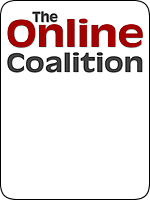
« Clinton Report: Identifying the Threats | Main | Clinton Report: Protecting the Homeland »
Before the 9/11 Commission questioned Richard Clarke, who as the terrorism "czar" of the Clinton administration prepared this national-security report to Congress, opposition to George Bush from both former members of the prior administration and some members of Congress focused on Bush's strategy of pre-emption -- stopping threats militarily before they became "imminent". Vast amount of energy and debate has gone into whether Bush declared Iraq an imminent threat explicitly (he didn't) or implicitly. Based on this, Bush's opponents have declared the military action in Iraq a violation of international law.
However, this report to Congress clearly indicated that the previous administration felt differently. For instance, under the subheading Preparing for an Uncertain Future, the administration made the following suggestions:
In addition, preventative diplomacy, often undergirded by the deterrence of our full military capabilities, may help contain or resolve problems before they erupt into crises or contingency operations.
You can read this as either a subtle endorsement of pre-emptive military action or simply an intention of issuing empty threats. It seems a particular folly to rely on our "full military capabilities" to "resolve problems" before they become so acute that they become active crises, if you're not going to do anything with those military capabilities than show them off. Therefore, it would appear that the strategy envisioned by the Clinton administration foresaw the use of those military capabilities to stop problems before they became imminent threats -- precisely what Bush argued in support of military action in Iraq. However, you can also argue that the history of the Clinton administration demonstrated that on those rare occasions where military action was taken, it fell far below the "full military capabilities" they had at hand.
In Section II, this idea is fleshed out a bit more, although the section regarding military action for counterterrorism purposes comes fifth:
We must continue to improve our program to combat terrorism in the areas of antiterrorism, counterterrorism, consequence management, and intelligence support to deter terrorism. We will deter terrorism through the increased antiterrorism readiness of our installations and forward forces, enhanced training and awareness of military personnel, and the development of comprehensive theater engagement plans. In counterterrorism, because terrorist organizations may not be deterred by traditional means, we must ensure a robust capability to accurately attribute the source of attacks against the United States or its citizens, and to respond effectively and decisively to protect our national interests. U.S. armed forces possess a tailored range of options to respond to terrorism directed at U.S. citizens, interests, and property. In the event of a terrorist incident, our consequence management ability to significantly mitigate injury and damage may likely deter future attacks. Finally, we will continue to improve the timeliness and accuracy of intelligence support to commanders, which will also enhance our ability to deter terrorism.
This is the entire military strategy for counterterrorism, as reported to Congress in December 2000. Note that the bolded section (my emphasis) still envisions the military option in only a reactive mode, and then only when we can "prove" from where an attack originated. Not only would this have not prevented 9/11, it's doubtful that we would have invaded Afghanistan afterwards using this strategy and criteria.
But later in Section II, under the heading Combating Terrorism, the report concedes that law-enforcement may not be enough to prevent attacks -- which should have been obvious after the series of attacks the US had suffered throughout the 1990s:
Whenever possible, we use law enforcement, diplomatic, and economic tools to wage the fight against terrorism. But there have been, and will be, times when those tools are not enough. As long as terrorists continue to target American citizens, we reserve the right to act in self-defense by striking at their bases and those who sponsor, assist, or actively support them, as we have done over the years in different countries. ... However, it is not only the response capabilities that need significant resources. It is our preventive efforts, such as active diplomatic and military engagement, political pressure, economic sanctions, and bolstering allies' political and security capabilities, that also require strong financial support in order to squeeze terrorists before they act.
Since pre-emption against groups targeting the US was therefore justified, why didn't the Clinton administration go after Afghanistan? The language here is almost exactly the same as Bush stated after 9/11: "we reserve the right to act in self-defense by striking at their bases and those who sponsor, assist, or actively support them." So what stopped them? Apparently, they didn't feel the threat was strong enough to build support for such an action, either diplomatically or militarily -- which makes their claim that they considered al-Qaeda the most critical national-security threat laughable.
Another curious part of this summary of the opening section recalls the criticisms of Donald Rumsfeld in his modernization efforts of the US military to make them more mobile and agile to respond to issues like asymmetrical threats. That issue died in the aftermath of the breathtakingly fast fall of Baghdad, but it's worth remembering all the criticism when paired up with this assertion in the report:
Meeting this widening array of new threats to our security will require us to transform our capabilities and organizations. Within our military, this transformation has taken several forms: focused science and technology efforts; concept development and experimentation by the Services, combatant commands, and the Joint Staff; robust processes to implement change; and new approaches to foster a culture of bold innovation and dynamic leadership.
It sounds as if Rumsfeld followed this prescription fairly closely, and it calls into question why the Clinton administration hadn't acted on its own recommendation before leaving office.
More to come ...
Note: This post has been updated several times for clarity and context.
Sphere ItTrackback Pings
TrackBack URL for this entry is
Listed below are links to weblogs that reference Clinton Report: Pre-emption and Reorganization?:
» Clinton Report from Everything I Know Is Wrong
My friend Ed at Captain's Quarters is taking a sharp scalpel to the Clinton Report (A National Security Strategy for A Global Age, Dec 2000 -- Contents). There are three parts so far and Ed's slicing it thin for our [Read More]
Tracked on April 6, 2004 2:52 PM
» http://beaconblog.com/beaconblog.php?p=273 from The Beacon
The Washington Times released President Clinton's final paper on national security that refutes the claim by Richard Clarke and former Clinton Administration that terrorism and al Qaeda was a top priority. Excerpt:
The final policy paper on nationa... [Read More]
Tracked on April 6, 2004 7:06 PM

captain*at*captainsquartersblog.com


My Other Blog!
E-Mail/Comment/Trackback Policy
Comment Moderation Policy - Please Read!
Skin The Site








Hugh Hewitt
Captain's Quarters
Fraters Libertas
Lileks
Power Line
SCSU Scholars
Shot In The Dark
Northern Alliance Radio Network
Northern Alliance Live Streaming!



Des Moines Register
International Herald Tribune
The Weekly Standard
Drudge Report
Reason
The New Republic
AP News (Yahoo! Headlines)
Washington Post
Guardian Unlimited (UK)
New York Times
Los Angeles Times
OpinionJournal
Pioneer Press
Minneapolis Star-Tribune
MS-NBC
Fox News
CNN

Design & Skinning by:
m2 web studios
blog advertising

- dave on Another National Health Care System Horror Story
- brooklyn on Hillary Not Hsu Happy
- rbj on Hillary Not Hsu Happy
- Robin S on Requiem For A Betrayed Hero
- Ken on Hillary Not Hsu Happy
- Robin S. on Requiem For A Betrayed Hero
- RBMN on Hillary Not Hsu Happy
- NoDonkey on Another National Health Care System Horror Story
- Robin Munn on Fred Thompson Interview Transcript
- filistro on When Exactly Did Art Die?










